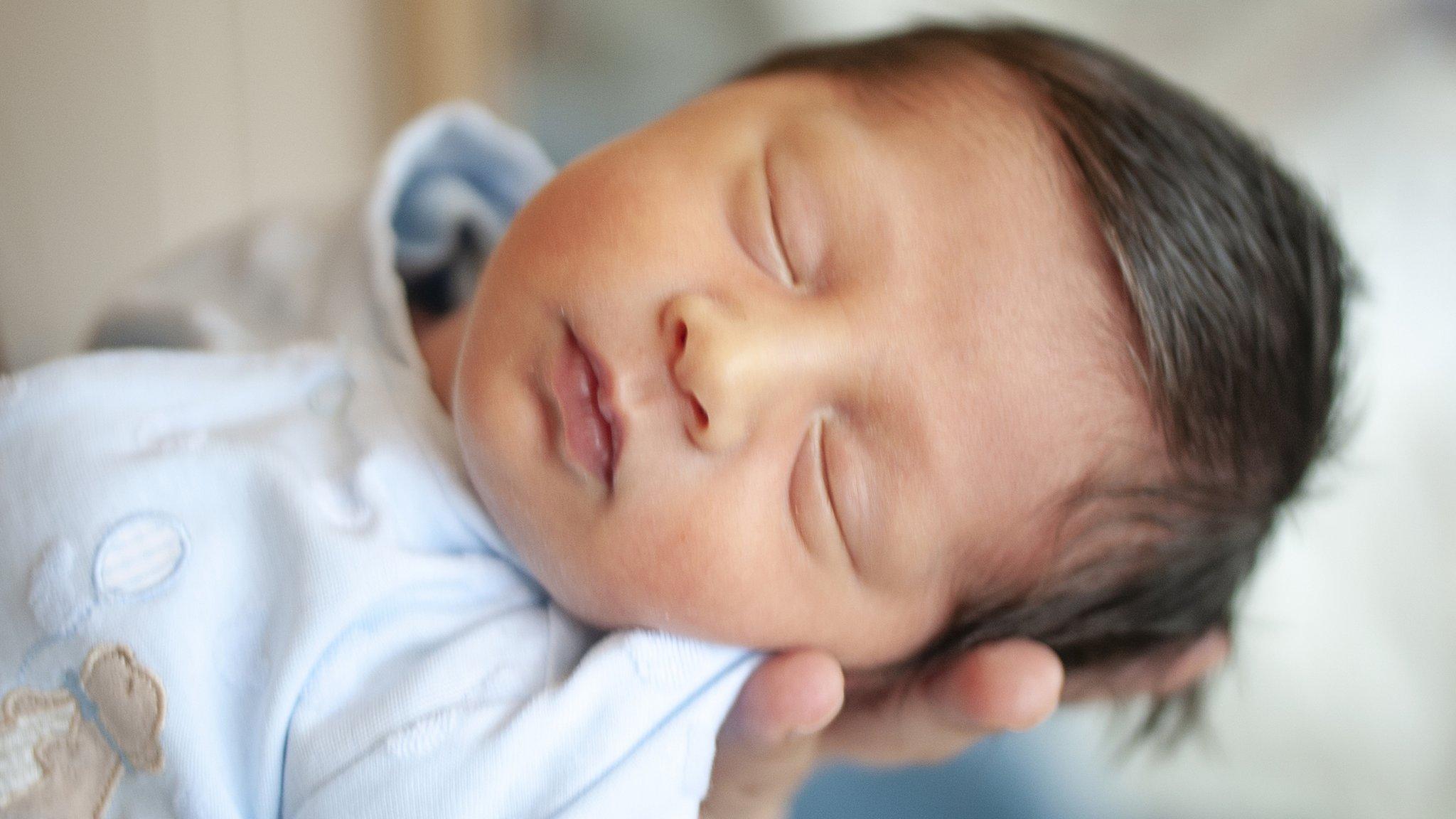US birth rate falls 4% to its lowest point ever
- Published
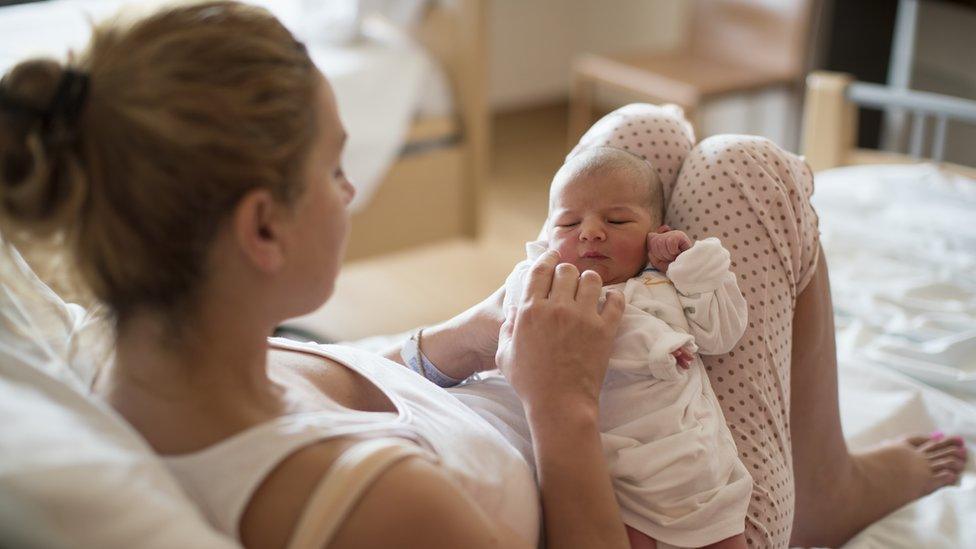
The downward trend in birth rates in the US has been seen throughout the world
The American birth rate fell for the sixth consecutive year in 2020, with the lowest number of babies born since 1979, according to a new report.
Some 3.6 million babies were born in the US in 2020 - marking a 4% decline from the year before, found the US Centers for Disease Control and Prevention (CDC) National Center for Health Statistics.
The slump was seen across all recorded ethnicities and origins, according to the findings.
The national picture mirrors a decline in births seen worldwide, a trend some experts say has been accelerated by the ongoing coronavirus pandemic.
What's in the report?
In the CDC report, demographers examined the country's general fertility rate, which compares the number of live births with the number of women considered to be of childbearing age - between 15 and 44 years old.
In 2020, the general fertility rate in the US was about 56 births per 1,000 women - the lowest rate on record and about half of what it was in the early 1960s.
The decline in birth rates was seen across all measured racial and ethnic groups. Births dropped by 4% among white, black and Latina women, 9% for Asian women, 3% for Hawaiians and other Pacific Islanders and 7% for Native American and Alaska native women.
How has giving birth changed during the pandemic?
The report also analysed the total US fertility rate, which estimates how many babies a hypothetical group of 1,000 women would have over their lifetime based on actual birth rates. For a generation to exactly replace itself, this number must be at or above 2.1.
According to the CDC, this rate has generally been "below replacement" since 1971 and has consistently been below replacement since 2007. Today, the US total fertility rate sits at 1.6 - another record low.
What's behind the drop?
Experts say the country's tumbling birth rate is closely linked to the average age of American mothers. Women are becoming mothers later in life - a phenomenon tied to increases in educational attainment, growing labour force participation and delays in marriage, according to the Pew Research Center, external. The average age of mothers at first birth is 27, up from 23 in 2010, recent CDC data has found, external.
This changing picture of motherhood has been driven in part by declines in pregnancy among teenagers. The birth rates among teenagers aged 15-19 had the steepest decline of all age groups: down by 8% in 2020 to around 15 births per 1,000 females.
The National Center for Health Statistics has said it is too early to determine whether the pandemic had a significant effect on birth rates because this year's data is in keeping with past trends. But initial research suggests that Covid-19 may have compounded existing patterns.
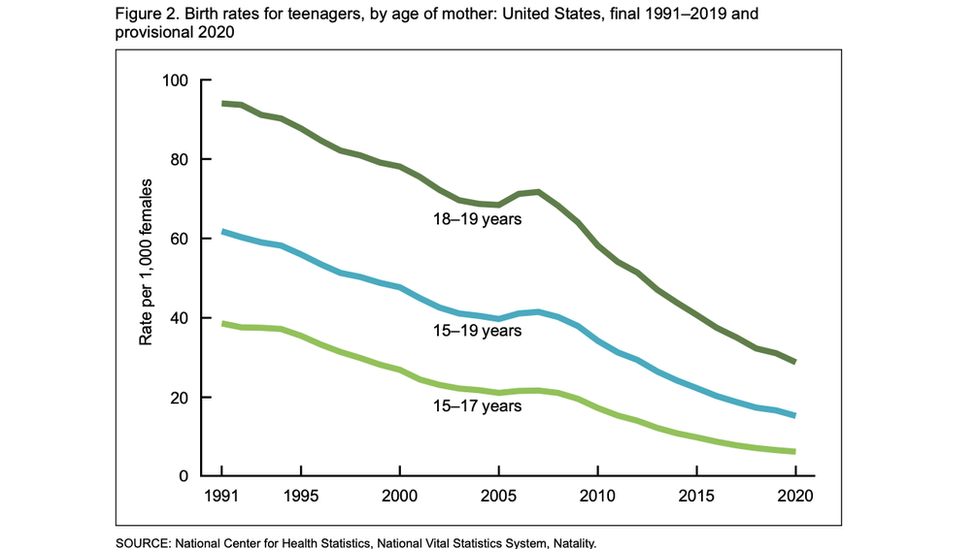
The average age of mothers is rising - driven by the decline in teenage pregnancies
In a June 2020 study by the Guttmacher Institute, one in three US women said that because of Covid-19, they were likely to delay having children or have fewer children altogether. And researchers from the Brookings Institution - who predicted a "large, lasting baby bust" due to Covid-19 - have suggested that the anxiety and economic uncertainty wrought by the pandemic will further depress birth rates going forward.
Data from the CDC shows births falling most sharply toward the end of last year when babies conceived at the start of the pandemic would have been born.
What's the global picture?
The slowing US birth rate is echoed by worldwide trends.
While wealthy countries like Germany and Japan have seen slowing birth rates for some time, the same is now happening in middle-income countries as well, including Thailand and Brazil. Globally, the fertility rate is expected to fall below replacement levels - 2.1 births per woman - by 2070, according to a 2019 report from the UN, external.
By the end of this century, the report found, the world's population is projected to virtually stop growing for the first time in history. And a widely cited study published in the Lancet last year suggested this population peak would come even earlier - in 2064.
Between 2020 and 2100, 90 countries are expected to lose population, including two-thirds of all countries and territories in Europe. According to the UN numbers, Africa is the only region in the world projected to have strong population growth for the rest of the 21st Century - mostly concentrated in sub-Saharan Africa.
Similar to trends in the US, the UN has linked falling fertility rates and population growth to gradual delays in childbearing among women. Though the mean age of childbearing varies widely throughout the world, overall increases will continue to lower fertility rates and global population growth in turn.
Related topics
- Published18 March 2021
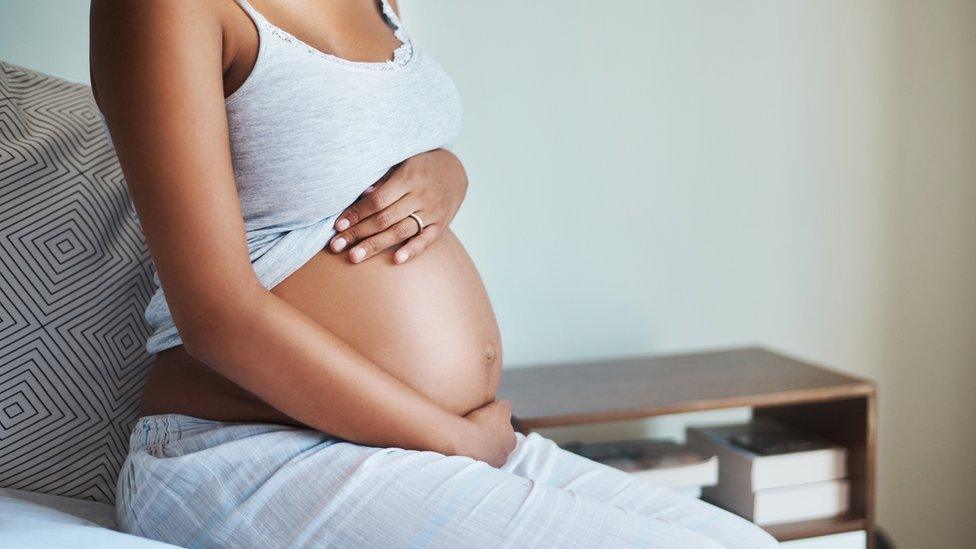
- Published4 March 2021
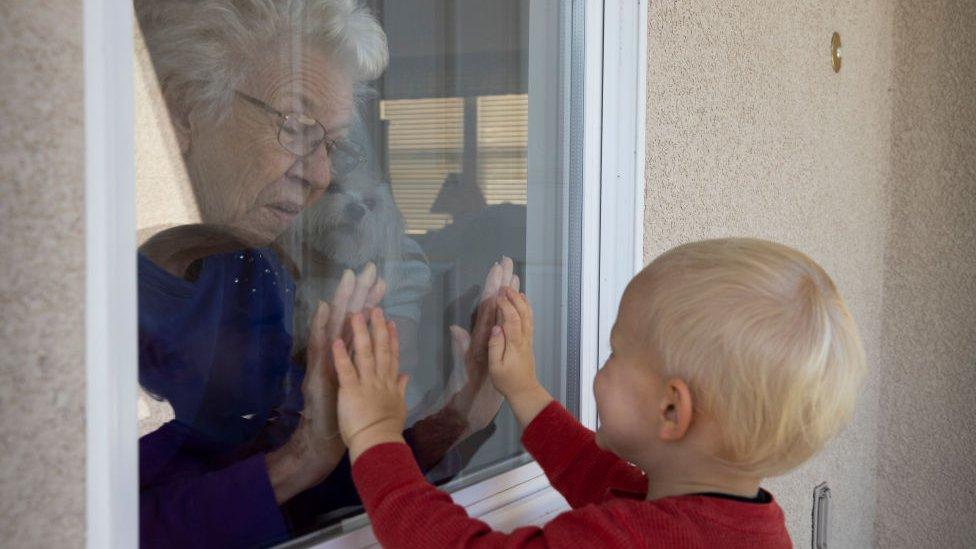
- Published15 July 2020
